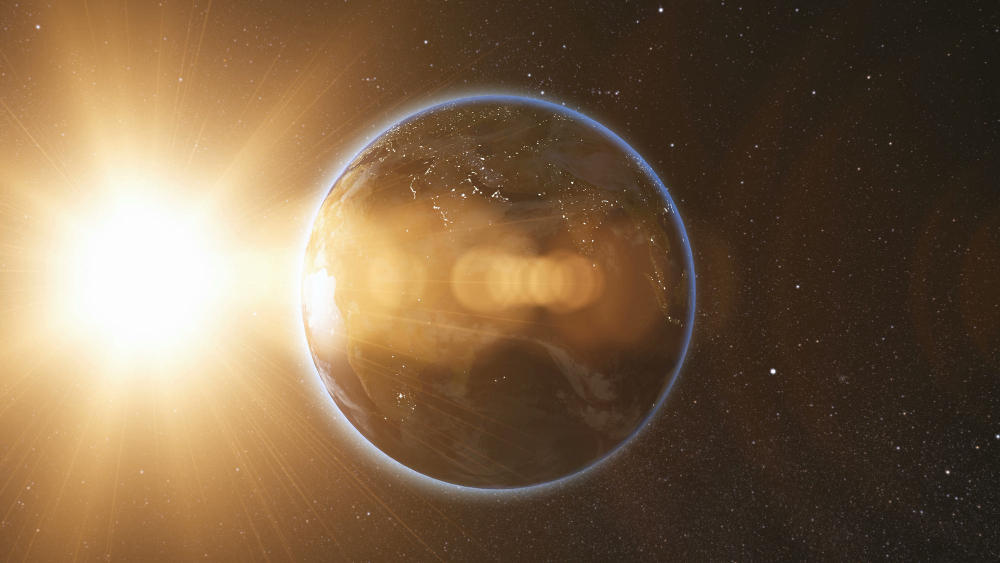
What Makes It Possible for the Earth to Orbit the Sun?
-
by Elliott C. Joyce
- 143
At the heart of Earth’s ability to orbit the Sun lies the fundamental force of gravity. Gravity is the invisible force of attraction that exists between any two masses, and it plays a crucial role in keeping celestial bodies like the Earth and the Sun in orbit. In simple terms, the Sun’s immense gravitational pull tethers the Earth to its orbit, preventing it from flying off into space. This gravitational attraction creates a delicate balance between the Earth’s forward momentum and the Sun’s gravitational pull, allowing the Earth to maintain its circular path around the Sun.
Unraveling Celestial Dynamics
The principles of celestial mechanics, as described by Sir Isaac Newton’s laws of motion, provide further insights into Earth’s orbital dynamics. According to Newton’s first law, an object in motion will remain in motion unless acted upon by an external force. In the case of Earth’s orbit, the forward momentum acquired during its formation continues to propel it along its orbital path, while the gravitational force exerted by the Sun acts as the centripetal force, keeping the Earth moving in a circular orbit.
Finding the Perfect Balance
Earth’s orbit around the Sun follows the principles of orbital mechanics, a branch of celestial mechanics that studies the motion of objects in orbit. Orbital mechanics dictate that for an object to maintain a stable orbit around another body, it must achieve the perfect balance between its forward velocity and the gravitational force exerted by the central body. In the case of Earth, its orbital velocity—approximately 30 kilometers per second—balances the gravitational pull of the Sun, allowing it to remain in a stable orbit.
The Invisible Tug
The concept of centripetal force is central to understanding Earth’s orbital motion. Centripetal force is the inward force that keeps an object moving in a curved path, such as a planet orbiting the Sun. In the case of Earth’s orbit, the gravitational pull of the Sun serves as the centripetal force, continuously pulling the Earth toward the Sun and preventing it from veering off into space. This gravitational tug-of-war creates the elliptical shape of Earth’s orbit, with the Sun located at one of the two foci of the ellipse.
Maintaining Stability
Another principle at play in Earth’s orbital mechanics is the conservation of angular momentum. Angular momentum is a measure of an object’s rotational motion, and it remains constant unless acted upon by an external torque. In the context of Earth’s orbit, the conservation of angular momentum ensures the stability of its orbital path around the Sun. As the Earth moves along its orbit, its angular momentum remains unchanged, maintaining the balance between its rotational motion and the gravitational force of the Sun.
Breaking Free from Gravitational Pull
To break free from Earth’s gravitational pull and venture into space, an object must achieve a minimum velocity known as escape velocity. Escape velocity is the speed required for an object to overcome the gravitational pull of a celestial body and travel into space indefinitely. For Earth, the escape velocity is approximately 11.2 kilometers per second at the surface. Anything traveling at this velocity or faster can escape Earth’s gravitational pull and enter space.
Earth’s Cosmic Dance
In essence, Earth’s ability to orbit the Sun is a delicate dance between gravitational forces, centripetal acceleration, and angular momentum. This cosmic ballet has persisted for billions of years, maintaining the stability of our solar system and providing the conditions necessary for life to thrive on Earth. As Earth continues its journey around the Sun, it serves as a testament to the beauty and intricacy of the laws of physics that govern the universe.
The Eternal Embrace of Gravity
In conclusion, Earth’s orbit around the Sun is made possible by the gravitational pull of our star, the principles of Newtonian mechanics, and the delicate balance of forces that govern celestial motion. From the unseen tug of gravity to the conservation of angular momentum, a complex interplay of physical laws ensures the stability and synchronicity of Earth’s cosmic journey. As we marvel at the wonders of our solar system, let us continue to explore the mysteries of the universe and uncover the secrets of our celestial home.
At the heart of Earth’s ability to orbit the Sun lies the fundamental force of gravity. Gravity is the invisible force of attraction that exists between any two masses, and it plays a crucial role in keeping celestial bodies like the Earth and the Sun in orbit. In simple terms, the Sun’s immense gravitational pull…
At the heart of Earth’s ability to orbit the Sun lies the fundamental force of gravity. Gravity is the invisible force of attraction that exists between any two masses, and it plays a crucial role in keeping celestial bodies like the Earth and the Sun in orbit. In simple terms, the Sun’s immense gravitational pull…